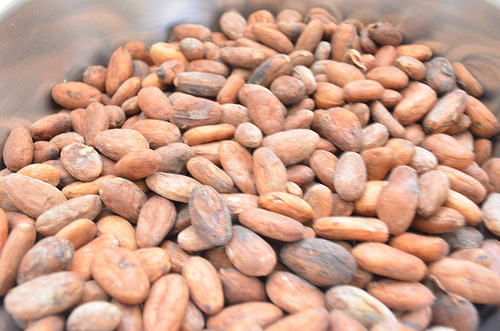Cacao’s genes and physical characteristics are being looked into in a study by applying the latest technology in functional genomics in a bid to improve the country’s cacao industry.

Photo by leosfarm.com
Funded by the Philippine Council for Agriculture, Aquatic, and Natural Resources Research and Development of the Department of Science and Technology (DOST-PCAARRD), the project seeks to address yield loss in cacao, which is estimated at 40% due to pests and diseases.
The project is titled Functional genomics assisted development of gene markers for economically important traits in cacao production and varietal improvement.
In specific terms, the project aims to produce cacao variety with durable and sustainable resistance to pests and diseases and high bean quality for chocolate production.
Doing away with conventional or natural breeding, which takes a long time, scientists will adopt functional genomics equipped with recent advances made in Next Generation Sequencing” (NGS) technologies.
The NGS technologies provide advanced and faster tools that will facilitate systematic comparison of cacao’s gene function. They can test the gene samples with more accuracy and efficiency.
These technologies, combined with the development of bioinformatics approaches, shall greatly reduce traditional way of breeding. Applying the whole sequence analysis using NGS can also help in avoiding researcher’s prejudice.
The genetics-based project on cacao’s genes and physical characteristics is expected to pave the way towards subjecting cacao to the Philippines’ functional genomics protocols. Its output may serve as the blueprint towards better understanding the genes and how they relate to yield, stress, tolerance, and disease resistance.
The project is a joint collaboration of the University of Southern Mindanao, the University of the Philippines Los Baños, Philippine Genome Center, and the Department of Science and Technology.
Commencing in early 2015, the three-year project is expected to produce a map of the genes of the best cacao varieties that can be used to develop a more superior variety best suited to Philippine conditions.
This research initiative on cacao is one of DOST-PCAARRD’s commitment under Outcome One, which is to provide science-based know how and tools that will enable the agricultural sector to raise productivity to world-class standards.
by Ricardo R. Argana, DOST-PCAARRD and John Aries Tabora PhD., University of Southern Mindanao Kabacan, North Cotabato

I’m interested in your article on agriculture. I think it will help me increase my knowledge and keep updated on various issues in agriculture